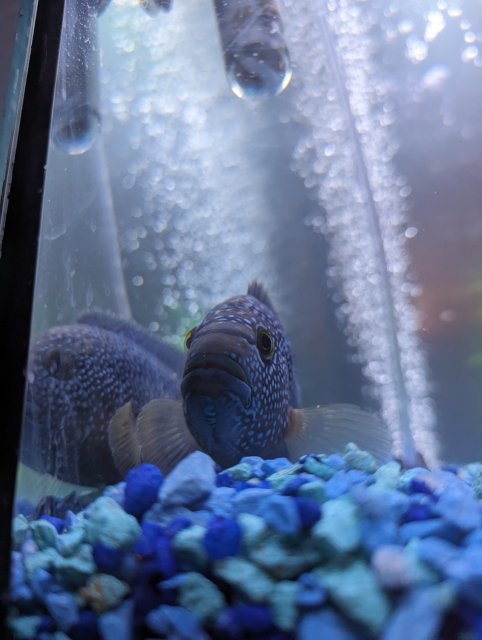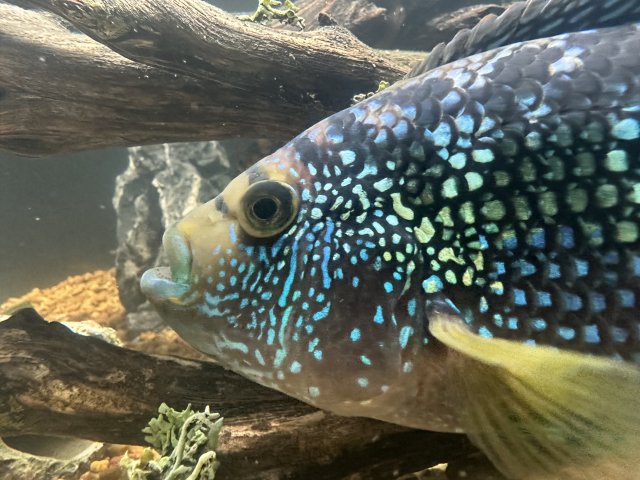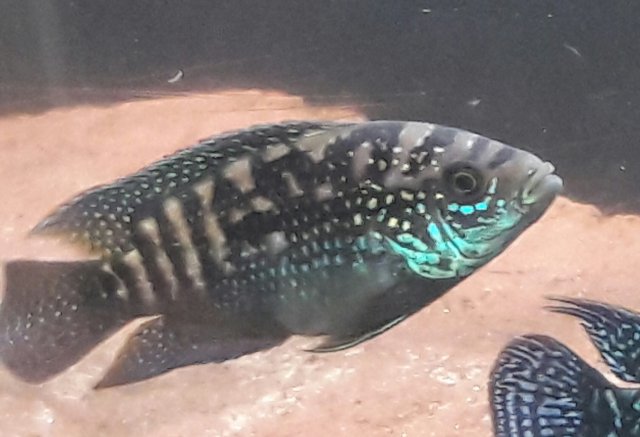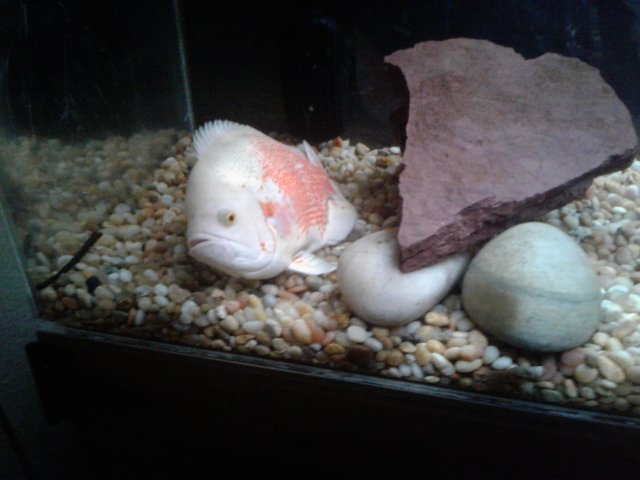We got this jack Dempsey a year ago. He's around 6-7 inches. I'm believe he is male and I have gotten mixed messages tryna do research because he has more pointed fins, but has bright blue spots all over his face
He is very aggressive and territorial. He's killed every fish we have put in the tank (all fish that were recommended for tank mates for a jack Dempsey).. so now he gets to be alone. His tank is 30 gallons. He eats strictly Cichlid Gold. He also likes to swim sideways when he's under his rock, play dead and randomly will start swimming erratically all over his tank.. not sure what's wrong with him or if he's just being dramatic. Water levels are all fine. He doesn't seem sick either...
So is it a male?? Anyone else have a dramatic fish?
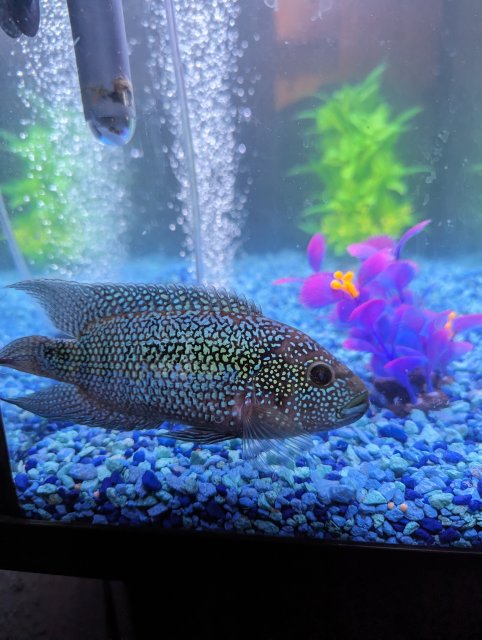
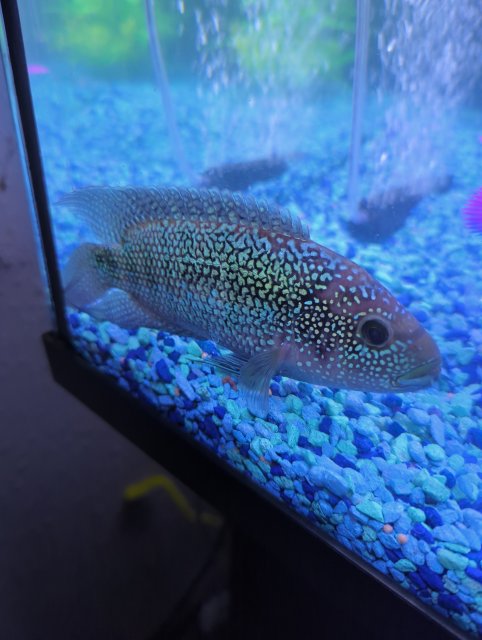
He is very aggressive and territorial. He's killed every fish we have put in the tank (all fish that were recommended for tank mates for a jack Dempsey).. so now he gets to be alone. His tank is 30 gallons. He eats strictly Cichlid Gold. He also likes to swim sideways when he's under his rock, play dead and randomly will start swimming erratically all over his tank.. not sure what's wrong with him or if he's just being dramatic. Water levels are all fine. He doesn't seem sick either...
So is it a male?? Anyone else have a dramatic fish?





